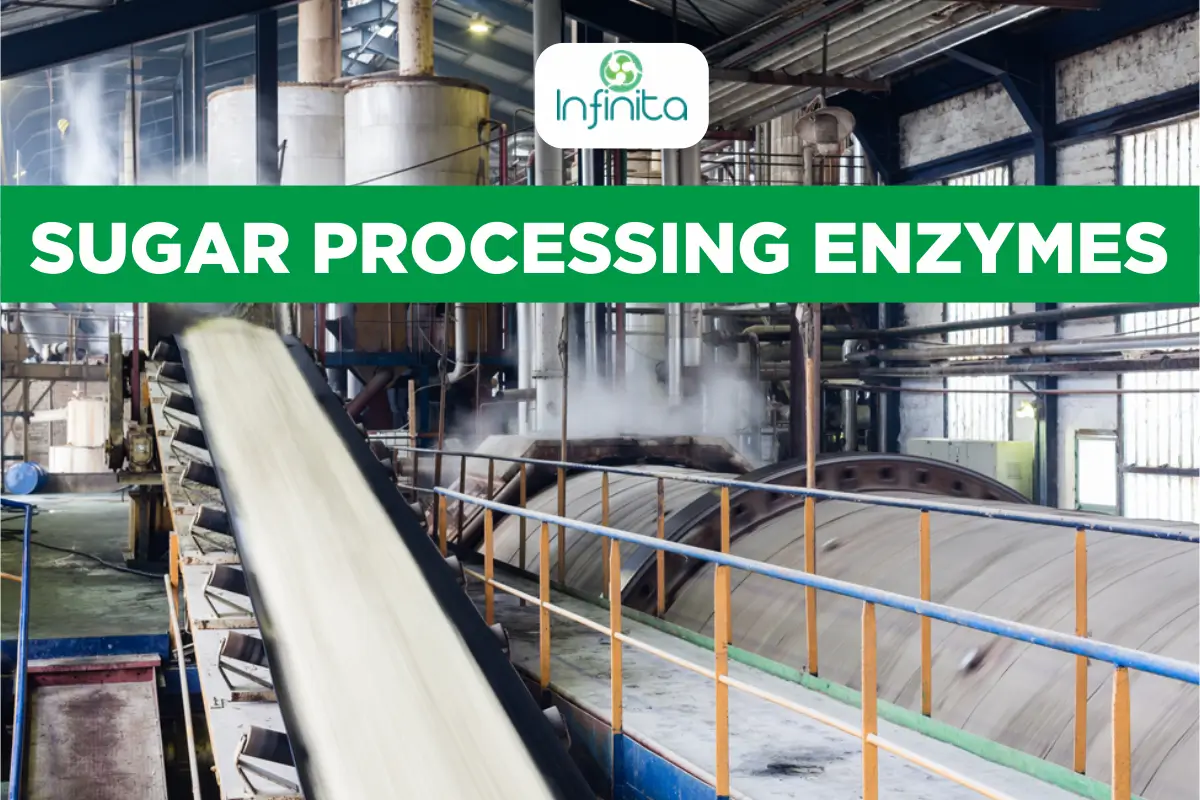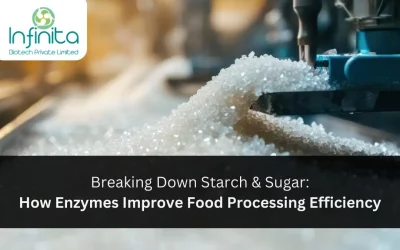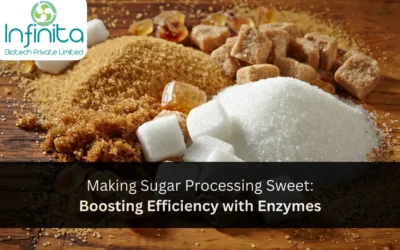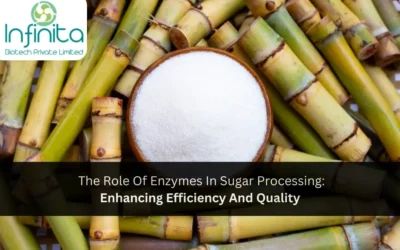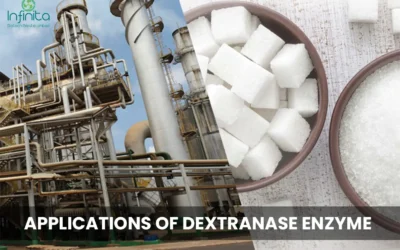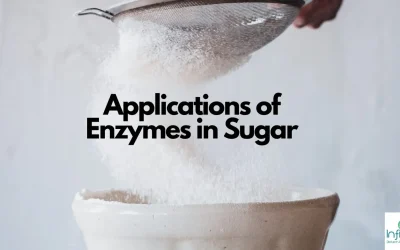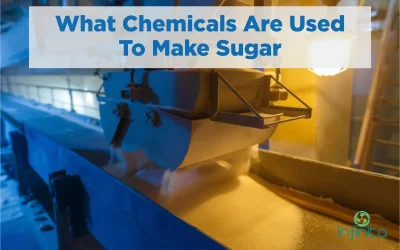Introduction
The sucrose industry is a comparatively minor user of enzymes but provides few historically significant and instructive examples of enzyme technology The hydrolysis (‘inversion’) of sucrose, completely or partially, to glucose and fructose provides sweet syrups that are more stable (i.e., less likely crystalline) than pure sucrose syrups.
The most familiar ‘Golden Syrup’ produced by acid hydrolysis of one of the less pure streams from the sugarcane refinery but other types of syrup are produced using yeast (Saccharomyces cerevisiae) Invertase. Although this enzyme is unusual in that it suffers from substrate inhibition at high sucrose levels (> 20% (w/w)), this does not prevent its commercial use at even higher concentrations:
1. Invertase
Traditionally, Invertase was produced on site by autolysing yeast cells. The autolysate was added to the syrup (70% sucrose (w/w)) to be inverted together with small amounts of xylene to prevent microbial growth. Inversion was complete in 48 – 72 h at 50 degrees C and pH 4.5. The enzyme and xylene were removed during the subsequent refining and evaporation. Partially inverted syrups were (and still are) produced by blending totally inverted syrups with sucrose syrups. Now, commercially produced Invertase concentrates are employed.
Invertase finds another use in the production of confectionery with liquid or soft centres. These centres are formulated using crystalline sucrose and tiny (about 100 U kg-1, 0.3 ppm (w/w)) amounts of Invertase. At this level of the enzyme, inversion of sucrose is very slow so the centre remains solid long enough for enrobing with chocolate to be completed. Then, over a period of days or weeks, sucrose hydrolysis occurs and the increase in solubility causes the centres to become soft or liquid, depending on the water content of the centre preparation.
The production of hydrolysates of a low molecular weight compound in essentially pure solution seems an obvious opportunity for the use of an immobilised enzyme, yet this is not done on a significant scale, probably because of the extreme simplicity of using the enzyme in solution and the basic conservatism of the sugar industry.
Other enzymes are used as aids to sugar production and refining by removing materials which inhibit crystallisation or cause high viscosity. In some parts of the world, sugarcane contains significant amounts of starch, which becomes viscous, thus slowing filtration processes and making the solution hazy when the sucrose is dissolved. This problem can be overcome by using the most thermostable -amylases (e.g., Termamyl at about 5 U kg-1) which are entirely compatible with the high temperatures and pH values that prevail during the initial vacuum evaporation stage of sugar production.
2. Dextran & Raffinose
Other problems involving dextran and raffinose required the development of new industrial enzymes. A dextran is produced by the action of dextransucrase from Leuconostoc mesenteroides on sucrose and found as slime on a damaged cane and beet tissue, especially when processing has been delayed in hot and humid climates.
Raffinose, which consists of sucrose with -galactose attached through its C-1 atom to the 6 positions on the glucose residue, is produced at low temperatures in sugar beet.
Both dextran and raffinose have the sucrose molecule as part of their structure and both inhibit sucrose crystal growth. This produces plate-like or needle-like crystals which are not readily harvested by equipment designed for the approximately cubic crystals otherwise obtained.
Dextran can produce extreme viscosity it processes streams and even brings the plant to a stop. Extreme dextran problems are frequently solved by the use of fungal dextranases produced from Penicillium species. These are used (e.g., 10 U kg-1 raw juice, 55 degrees C, pH 5.5, 1 h) only in times of crisis as they are not sufficiently resistant to thermal denaturation for long-term use and are inactive at high sucrose concentrations.
Because only small quantities are produced for use, this enzyme is relatively expensive. An enzyme sufficiently stable for prophylactic use would be required in order to benefit from economies of scale. Raffinose may be hydrolysed to galactose and sucrose by a fungal raffinase.
3. Starch Hydrolysis
There are three stages in the conversion of starch:
- Gelatinisation, involving the dissolution of the nanogram-sized starch granules to form a viscous suspension;
- Liquefaction, involving the partial hydrolysis of the starch, with a concomitant loss in viscosity; and
- Saccharification, involving the production of glucose and maltose by further hydrolysis.
Gelatinisation is achieved by heating starch with water and occurs necessarily and naturally when starchy foods are cooked. Gelatinised starch is readily liquefied by partial hydrolysis with enzymes or acids and saccharified by further acidic or enzymic hydrolysis.
The starch and glucose syrup industry use the expression dextrose equivalent or DE, similar in definition to the DH units of proteolysis, to describe its products, where:
In practice, this is usually determined analytically by use of the closely related, but not identical, expression:
Thus, DE represents the percentage hydrolysis of the glycosidic linkages present. Pure glucose has a DE of 100, pure maltose has a DE of about 50 (depending upon the analytical methods used; see equation and starch has a DE of effectively zero. During starch hydrolysis, DE indicates the extent to which the starch has been cleaved. Acid hydrolysis of starch has long been used to produce ‘glucose syrups’ and even crystalline glucose (dextrose monohydrate). Very considerable amounts of 42 DE syrups are produced using acid and are used in many applications in confectionery. Further hydrolysis using acid is not satisfactory because of undesirably coloured and flavored breakdown products. Acid hydrolysis appears to be a totally random process which is not influenced by the presence of a-1,6-glucosidic linkages.
